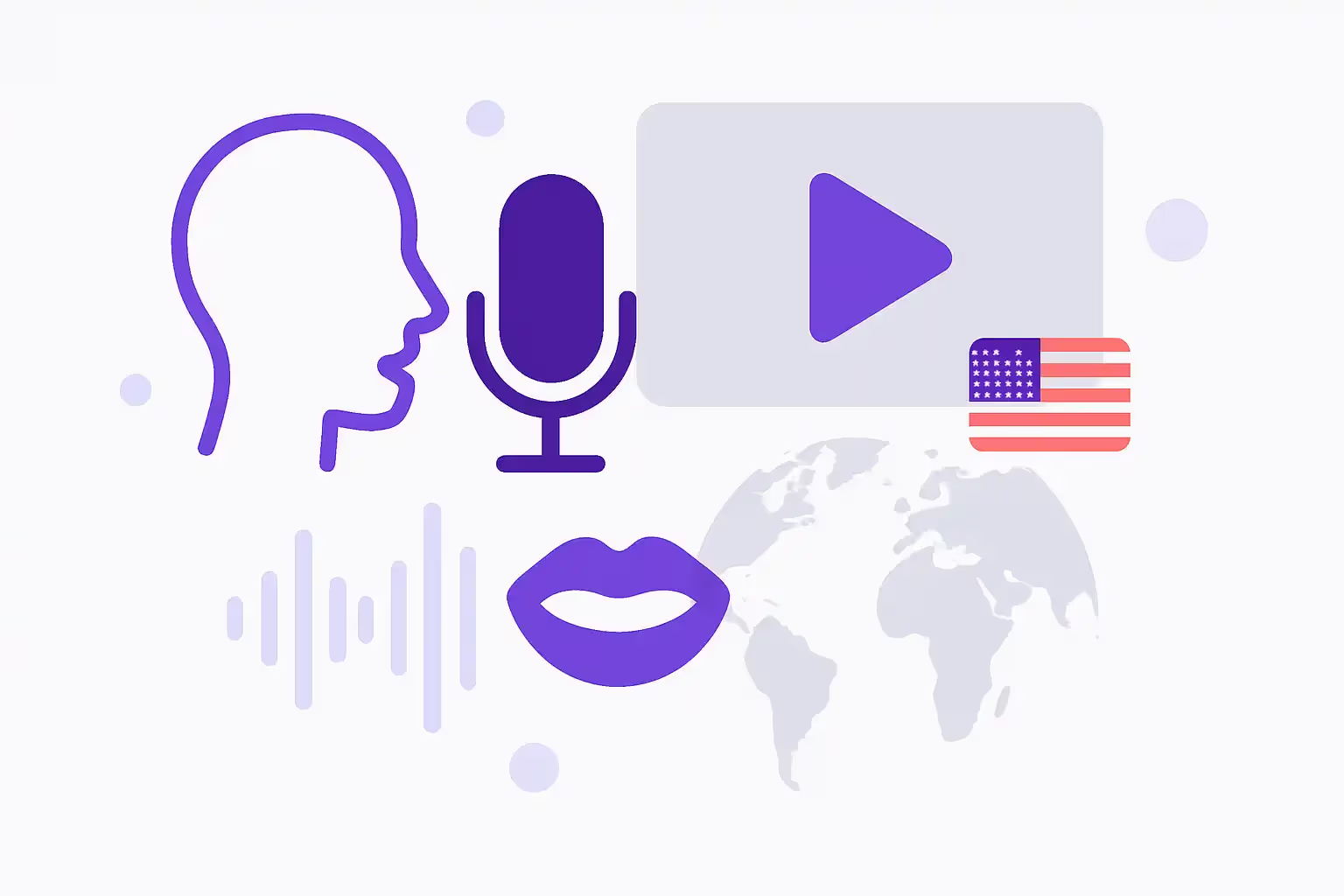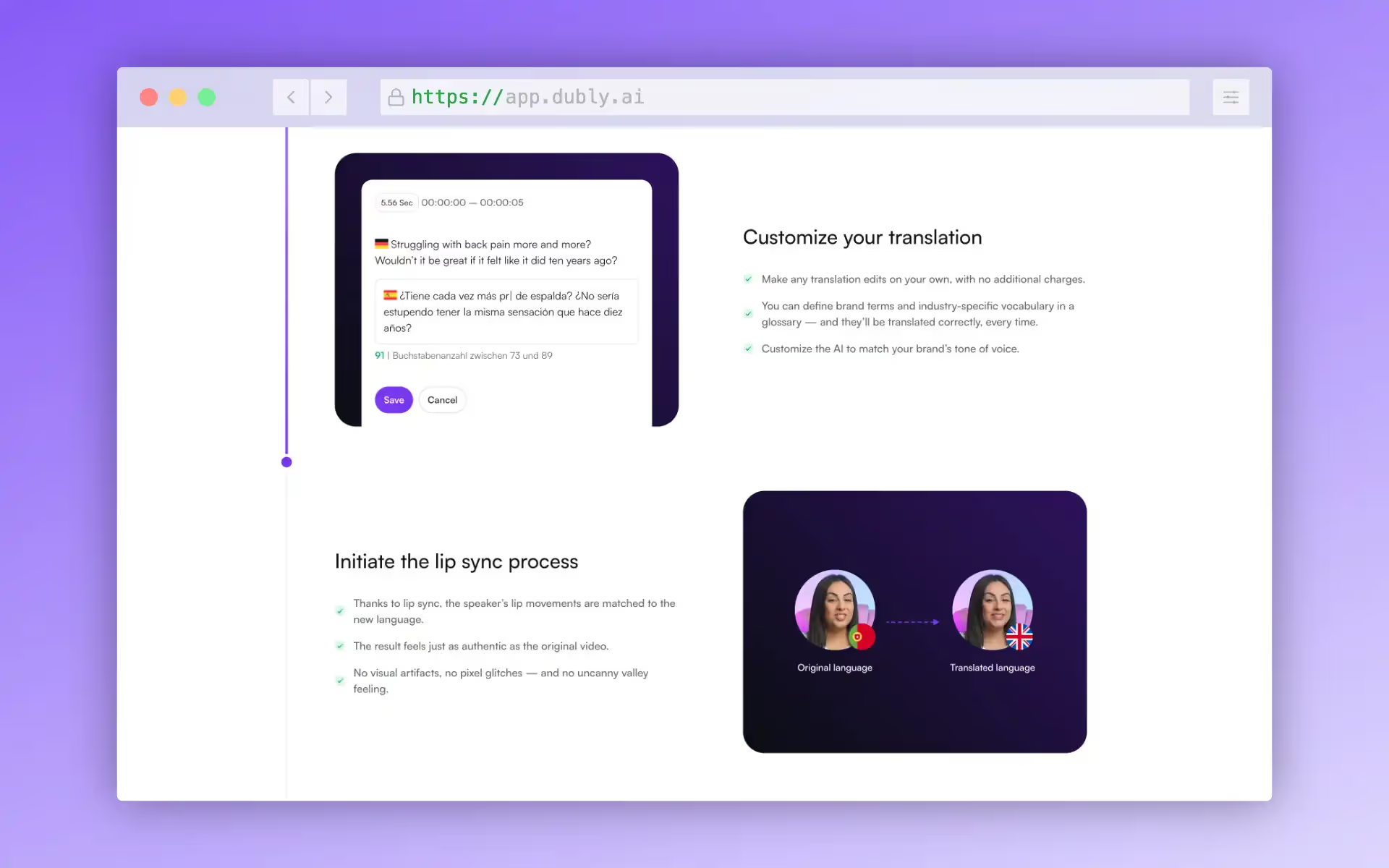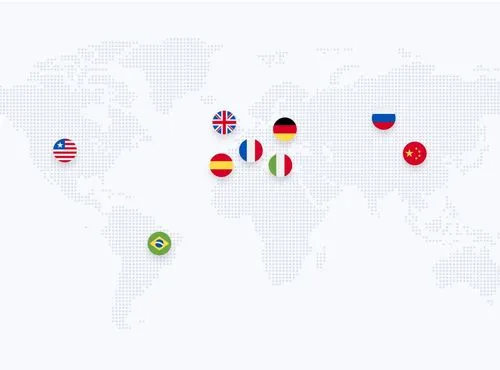Tech
September 12, 2025
What Is Video Dubbing? Benefits, Process & Comparison

What exactly is dubbing?
Dubbing means replacing the original audio of a video with a new voice track in another language.
Instead of reading subtitles while hearing the original speaker, viewers hear a new voice speaking in their own language – matching tone, tempo, and intent.
Modern dubbing can even adjust lip movement to match the new voice (lip-sync).
And thanks to AI, it no longer requires a studio, voice actors, or post-production.
Subtitles vs. Dubbing – what’s the difference?
Subtitles:
- Display translated text at the bottom of the screen
- The original voice remains audible
- Users must read while watching
- Emotion is lost
- Multitasking isn’t possible
Dubbing:
- Viewers hear the content in their language
- No need to read
- Voice, emotion, and nuance are preserved
- Works even when watching on the go or with small screens
- Feels native and immersive
In short:
👉 If you want your video to be understood and emotionally engaging, dubbing is the way to go.
What many forget: Traditional dubbing used to be a huge project
Old-school dubbing involved:
- Translating the script
- Casting native voice actors
- Booking a recording studio
- Directing and recording
- Editing and syncing audio to video
That worked for a single video. But for 10 videos? In 3 languages?
Costs explode.
Timelines stretch.
Internal resources max out.

Today, AI dubbing makes the entire process fast, scalable, and affordable
Modern platforms like Dubly.AI let you dub videos completely online –
No studio. No actors. No editing software.
All you need is your video – and a few clicks.
{{cta}}
How AI dubbing works – step by step
1. Upload your video
Just upload your MP4 file to the platform. Ideally with clean, clear audio.
2. Select your target language(s)
Choose one or more languages for translation – e.g., English, French, Spanish.
3. Adjust your settings
You can define:
- Number of speakers
- Specific terms or product names (glossary)
- Audio enhancements for better clarity
- Custom prompts for tone, style, and nuance
4. Start the translation
The AI analyzes your video in context – not just sentence by sentence.
It creates a natural-sounding voiceover in the new language.
Optionally, you can preserve the original speaker’s voice – speaking the new language.
5. Review and edit
Preview the result, make changes, or request a native speaker review for extra polish.
6. Generate lip-sync
Only after approval, the platform adjusts lip movement in the video to match the new voice track.
The result? It looks like the person actually speaks the translated language.
7. Download and publish
Export your final video and use it immediately – on YouTube, LinkedIn, your website, or internally.
When is dubbing better than subtitles?
- If you want emotional impact
Voice conveys tone, intention, and credibility. Subtitles don’t. - If your audience watches on the go
Subtitles require active screen time. Dubbing works even while driving or multitasking. - If your video has multiple speakers
Reading fast-paced dialogue is hard. AI detects and separates speakers automatically. - If you want a premium impression
A fully dubbed video feels tailored for the market – more polished, more engaging.
Real-world comparison
Scenario:
You have five 2-minute product videos in German. You want to localize them into English, Spanish, and French.
Traditional dubbing would mean:
- Hiring 3 voice actors per language
- Booking multiple studios
- Managing weeks of back-and-forth
- Spending thousands of euros
With Dubly.AI:
- Upload, configure, preview, download
- Done in hours, not weeks
- Easily repeatable for more languages
- No stress, no overhead
And if you want to tweak a line?
No need to rebook a recording session. Just update it and reprocess.
🤖 Still worried that AI sounds robotic? Think again.
This used to be true. But modern AI dubbing is a different world.
Platforms like Dubly use:
- Large Language Models for contextual translation
- Natural voice generation with tone, rhythm, and breathing
- Voice cloning to retain the original voice across languages
- Advanced lip-sync that adjusts facial motion to match speech
And you stay in control – review everything, customize what matters, and request human review when needed.
FAQ: What Is Video Dubbing & Why Choose It with Dubly.AI
Question: What is video dubbing?
Answer: Replacing original audio with a translated voice track in another language, matching tone, tempo and meaning. Optionally includes lip sync.
Question: What are the benefits of dubbing vs subtitles?
Answer: Preserves emotion & nuance, no need to read, works better for mobile/small screens, delivers more immersive & native-feeling content.
Question: How does the dubbing process work on Dubly.AI?
Answer: Upload video → choose target language(s) → adjust settings (speakers, glossary, tone) → translate → review & edit → lip sync → download & publish.
Question: Is AI dubbing faster and cheaper than traditional dubbing?
Answer: Yes — traditional dubbing needs studios, voice actors, long timelines; AI dubbing via Dubly is scalable, online, cost-effective.
Question: When should I prefer dubbing over subtitles?
Answer: When you want emotional impact, have multiple speakers, want a premium polished impression, or need content that works on the go / for all audiences.
{{callout}}
🏁 Final takeaway: Dubbing is the new standard for global video communication
Subtitles are a start.
But dubbing is the difference between being seen – and being heard, felt, remembered.
With Dubly.AI, you get:
- Natural, context-aware translation
- Realistic voices (even your own)
- Lip-synced results that feel local
- Full control over the result
- No voice actors. No studios. No bottlenecks.
Does the Dubly.AI free trial include the Lipsync feature?
Yes. We believe you need to experience the full technology to understand its value. The free trial includes Generative Lipsync and Voice Cloning, not just simple audio translation.
Is there a difference between a standard "Video translater" and Dubly.AI?
Yes. A standard "Video translater" often only translates text or audio. Dubly.AI is a comprehensive AI solution that adapts the visuals (mouth movements) to the audio, creating a seamless experience.
Can I use Dubly.AI for long-form content?
Yes. While many free tools limit you to 60 seconds, Dubly’s engine is built for scale – from TikTok Shorts to hour-long corporate training modules.
Can I use translate video free tools to internationalize my content?
Yes, absolutely. Using free tools is a great starting point to test new markets without a budget. However, keep in mind that methods like subtitles or basic video translator apps usually only transfer information, not emotion. To truly internationalize your brand's personality and retain viewers, you will eventually need lipsync technology to ensure the audience feels connected to you, not just the text.
Does a free ai video translator work for all types of videos?
It works well for content where the speaker is not visible, such as screen recordings or faceless tutorials. However, for any video featuring a person speaking on camera, a standard tool often falls short. Because it lacks lipsync, the visual mismatch distracts the viewer. For content meant to build trust or emotion, you need a solution that adapts both the voice and the visuals.
Is there a free version of Dubly.AI?
You can translate your first video for free so you can validate the quality with your own files. We believe in letting you prove the value first.
Does this work for any language?
Our AI supports over 30 languages, covering the majority of global markets (English, Spanish, German, French, Japanese, Mandarin, etc.). The Lip Sync works universally across these languages.
How accurate is the translation?
AI translation is very good (95%+), but for critical content, context matters. That is why we offer Native Speaker Control (NSC) as an add-on, where humans review the AI's work. This combines the speed of software with the precision of a native speaker.
Can I automate this process?
Yes. For agencies, media houses, or companies with high volume, we offer an API. This allows you to integrate video translation directly into your content management workflow, removing manual upload steps entirely.
Über den Autor

Newest articles

Use Cases
How to Translate Video Free: 3 Ways to multiply your reach
Looking for an AI video translator? We answer how to translate video free using 3 methods: Subtitles, Basic TTS, and Professional Lipsync.

Simon Pieren
December 8, 2025

Use Cases
Translate Video Free: A Guide to AI Translation, Lip Sync & Voice Cloning
Looking to "translate video free"? Learn the technical differences between standard dubbing and generative AI Lip Sync, and how to test professional quality risk-free.

Simon Pieren
November 28, 2025

Use Cases
How AI Video Translation Connects Global Teams
How AI video translation breaks down language barriers in enterprises - secure, empathetic, and scalable.

Simon Pieren
November 24, 2025
